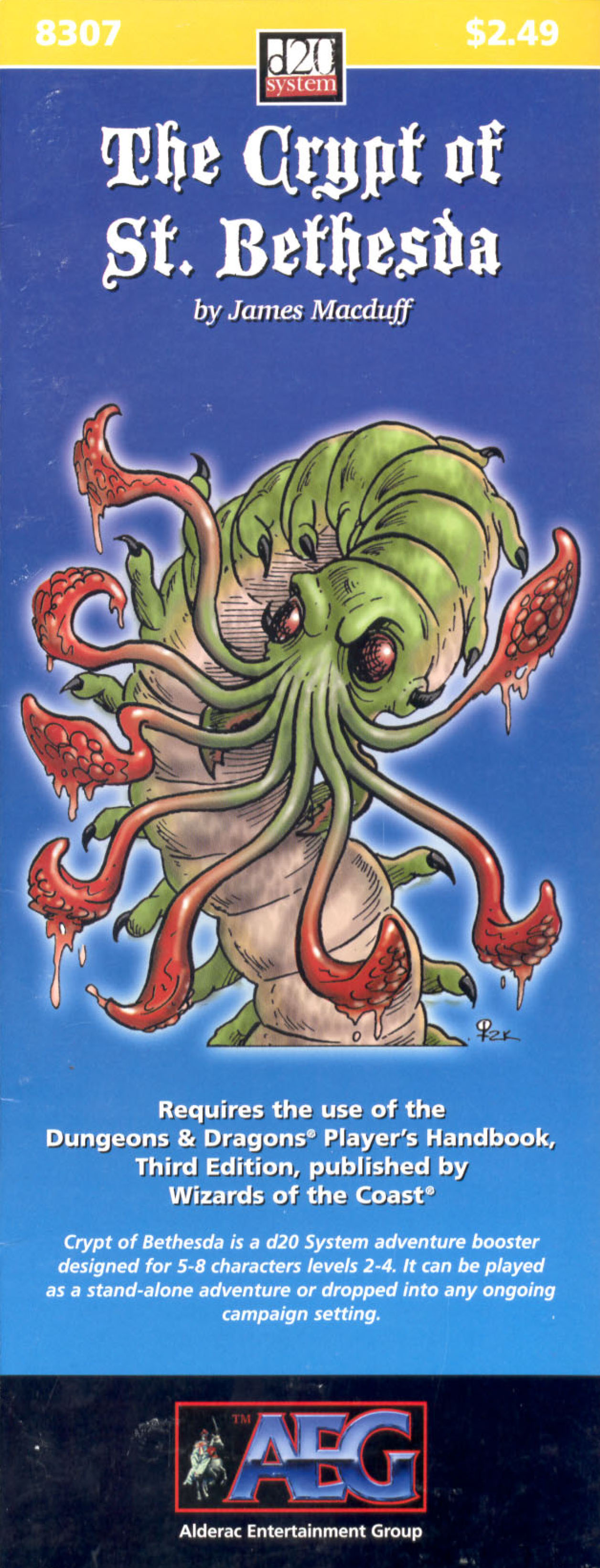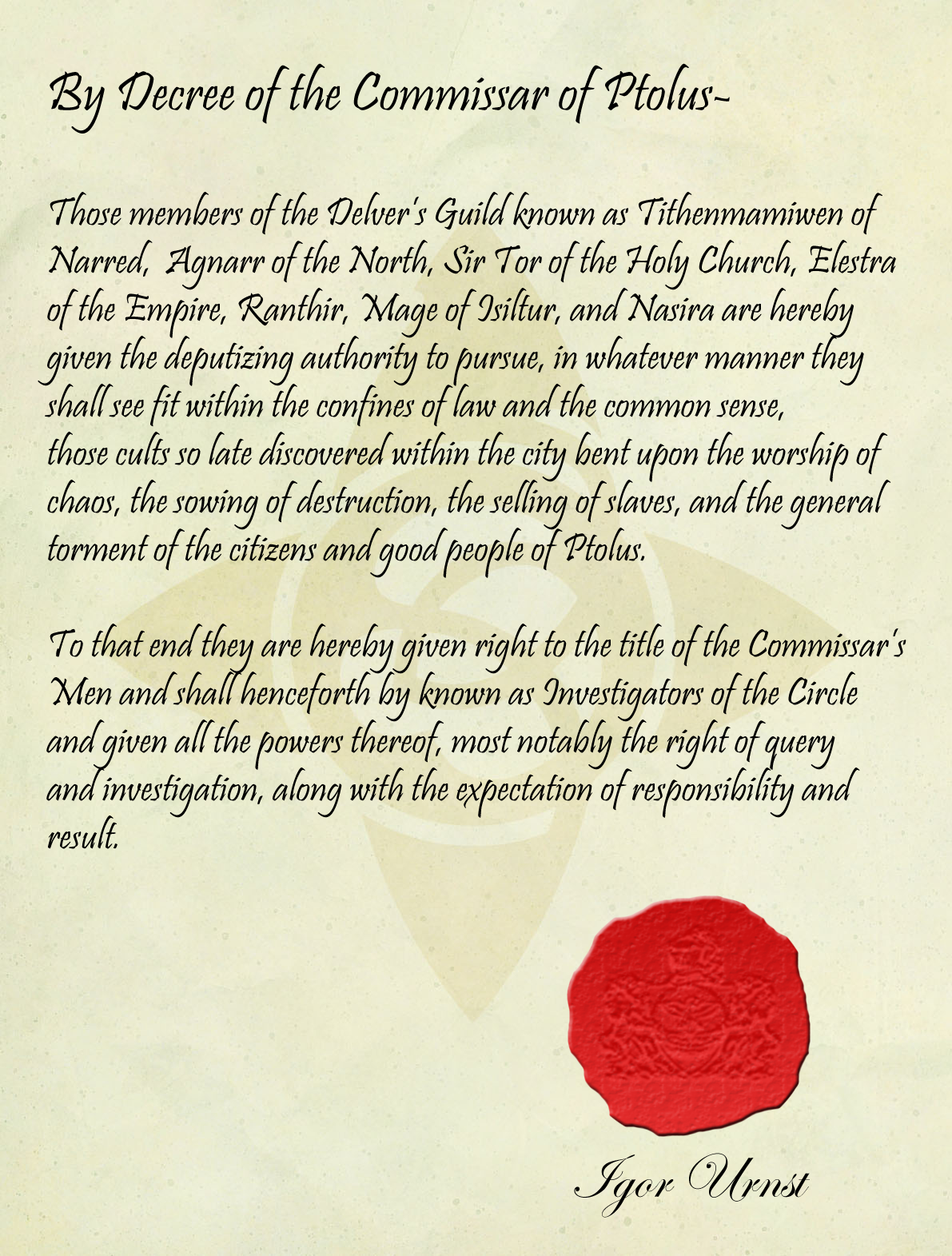
Bringing the group together during Session 0 can take a lot of forms, but it ultimately boils down to figuring out why this specific group of PCs is going to stick together and go on adventures / solve mysteries / get in trouble / work with each other week after week.
Whatever the modus operandi of the campaign might be, one of the most reliable ways to make this happen is for the PCs to have existing relationships with each other: If they’re family, friends, and/or coworkers, then they’ll care about each other, routinely be in the same place together, and/or be pursuing the same goals. That makes it a lot easier to explain why they’re all at the ski lodge where the murder happened or taking a freelance contract to raid the Salem-Watts biolabs.
The nice thing is that you don’t need all of the PCs to have the same relationships with each other, nor does every PC need a direct relationship with every other PC. As long as there’s a web of relationships weaving everyone together, the events of the campaign will slowly draw everyone closer and closer to each other.
The Dresden Files Roleplaying Game had an ingenious method for setting up these relationships which was, sadly, stripped out of the current Dresden Files Accelerated version of the game. Fortunately, it can be easily adapted to almost any game and setting.
SHARED HISTORY
Once the players have created their characters and have a firm grasp on who they are, you can plug this module in by creating an Adventure for each PC.
Note: This assumes, of course, that the start of the campaign won’t be the PCs’ first rodeo: They’ll be coming to the table with some experience under their belts. If that isn’t the case, then you may need to make some adjustments. (For example, maybe the campaign takes place on the UCLA campus. Rather than adventure, you could create a Freshmen Year event for each PC, establishing some big, dramatic event that happened to them.)
To begin creating your PC’s adventure, start by grabbing a notecard. This will be your adventure card.
STEP 1: TITLE
Write a title for your adventure at the top of your adventure card. If you’re having trouble coming up with a cool title, think about books, movies, and short stories from the same genre as the campaign and then give them a twist:
- The Bourne Identity could become The Sampson Identity.
- Gone With the Wind could, with a twist to both noun and verb, become Arrival by Sea.
- The Lord of the Rings, by similar process, becomes The Duke of Swords.
- Escape from New York just needs a location shift to become Escape from Casablanca.
Alternatively, you might use any of these simple title formulas:
- The [Adjective] [Noun] (e.g., The Black Prince or The Remarkable Mr. Smith)
- The [Noun] of the [Place] (e.g., The Anxiety of Mars or The Uncle of London)
- They [Verb] (e.g., They Dream or They Hunt)
- A [Noun] [Past-Tense Verb] (e.g., A Crow Murdered or A Funeral Bound)
- The [Adjective] and [Adjective] [Noun] (e.g., The Macabre and Tragic Vision or The Gruesome and Forgotten Murder)
You can also create your own title formulas like this by taking many existing titles and breaking them down by word type.
Like any title, your goal is to create something evocative and intriguing. You might already have a premise in mind for your adventure (as described in Step 2) and craft your title to it; but starting with a cool title and then figuring out what the adventure for it is can be equally effective.
STEP 2: ADVENTURE PREMISE
Next, write down a simple premise for your adventure. The Dresden Files Roleplaying Game suggests this template:
When [something happens], [your protagonist] [pursues a goal]. But will [your protagonist] succeed when [antagonist provides opposition]?
For example:
When SpaceX engineers start turning up dead with blood streaming from their eyes, Jack Hammer is hired to discover the dark truth. But will Jack Hammer succeed when it becomes clear Elon Musk wants to shut the investigation down?
But there are a lot of different premises you could use. For example, S. John Ross’ Big List of RPG Plots is a fantastic resource, including entries like:
MANHUNT
Someone is gone: they’ve run away, gotten lost, or simply haven’t called home in a while. Somebody misses them or needs them returned. The PCs are called in to find them and bring them back.
Which can give you a premise like this:
Duchess Scarlet Madara is kidnapped from the Cannes Film Festival! Jack Hammer is at the festival attending the opening of a film written about his life. Can he solve the case even while standing in the limelight?
In writing up your premise, make sure your character’s role in the story is clear and phrase the conclusion as a question, leaving the ultimate outcome uncertain. You’ll also want to keep it short: ideally no more than two or three sentences.
STEP 3: GUEST STAR
Everyone should now read their character’s adventure premise out loud and place their notecard in the center of the table. Then, taking turns in whatever manner seems appropriate, everyone should select an adventure belonging to a different PC. (Alternatively, everyone could pass their card to the left. Or you could shuffle the cards and deal them out randomly.)
However the decision is made, you should now be holding the notecard for an adventure starring a PC other than your own. Your character will now be guest starring in this adventure!
To do this, simply add one or two sentences to the card explaining your character’s supporting role in the story. When brainstorming your contribution, it can be a good idea to talk things over with the player of the starring character and make sure you’re both on the same page and happy with the outcome. Your character should be significant — either complicating the situation or aiding the protagonist (or possibly both) — but not usurping the role of main character. (You don’t want to be a Mary Sue.)
It can be useful to think of a single dramatic situation involving your character, the protagonist, and, optionally, the antagonist(s). For inspiration, you might want to check out Thirty-Six Dramatic Situations by Georges Polti. (You can find of Polti’s original book here, but it may be easier to consult of the hundreds of summary lists scattered around the internet to glean the essential idea.)
For example, one of Polti’s dramatic situations is:
13. ENMITY OF KINSMEN
“Hatred of one who should be loved” is a powerful antithesis.
(…)
(3) Hatred Between Relatives for Reasons of Self-Interest: “La Maison d’Argile” (Fabre, 1907). Example from fiction: “Mon Frere” (Mercereau).
Which might lead you to:
Rick Cuthain, the bastard brother of Duchess Scarlet who has always resented her, is the #1 suspect of the Gendarmerie! But after convincing Jack Hammer of his innocence, Rick helps him discover Scarlet’s connections to the strange Cult of Serpents.
Once you’ve added your character to the adventure card, take a moment to jot down the title and other details in your own character’s background. This is, after all, part of their story, too! Note, for example, how Rick’s player has discovered not only a sister, but an entire family wrought with drama through their participation in Jack’s story.
STEP 4: SECOND GUEST STAR
Repeat Step 3, with each player selecting a different character’s story and casting their PC as a guest star. (It’s okay to guest star in someone else’s story if they’re also a guest star in yours, but you shouldn’t guest star in the same story twice.)
For this step, it’s okay if your contribution also wraps the story up, but it doesn’t have to.
Once you’re done with this step, everyone should (a) have an adventure starring their character and guest starring two other PCs and (b) be the guest star in two other PCs’ adventures.
(If you only have two players, skip this step.)
STEP 5: WRAPPING UP
If your second guest star’s contribution to your adventure didn’t provide a conclusion, add one now.
You can flesh your adventure out a bit if you want, but you don’t have to. The capsule descriptions should provide you with a fundamental understanding of what happened that you and the other players can riff on and develop during play. (“Remember that time we broke into the Starlink facility in Bastrom and hacked the whole network?”)
If they don’t already, make sure everyone involved in your adventure has a copy of it. (Or, at least, their part in it.) You want to make sure everyone knows the canonical version of events.
Back to Session 0 Modules

















